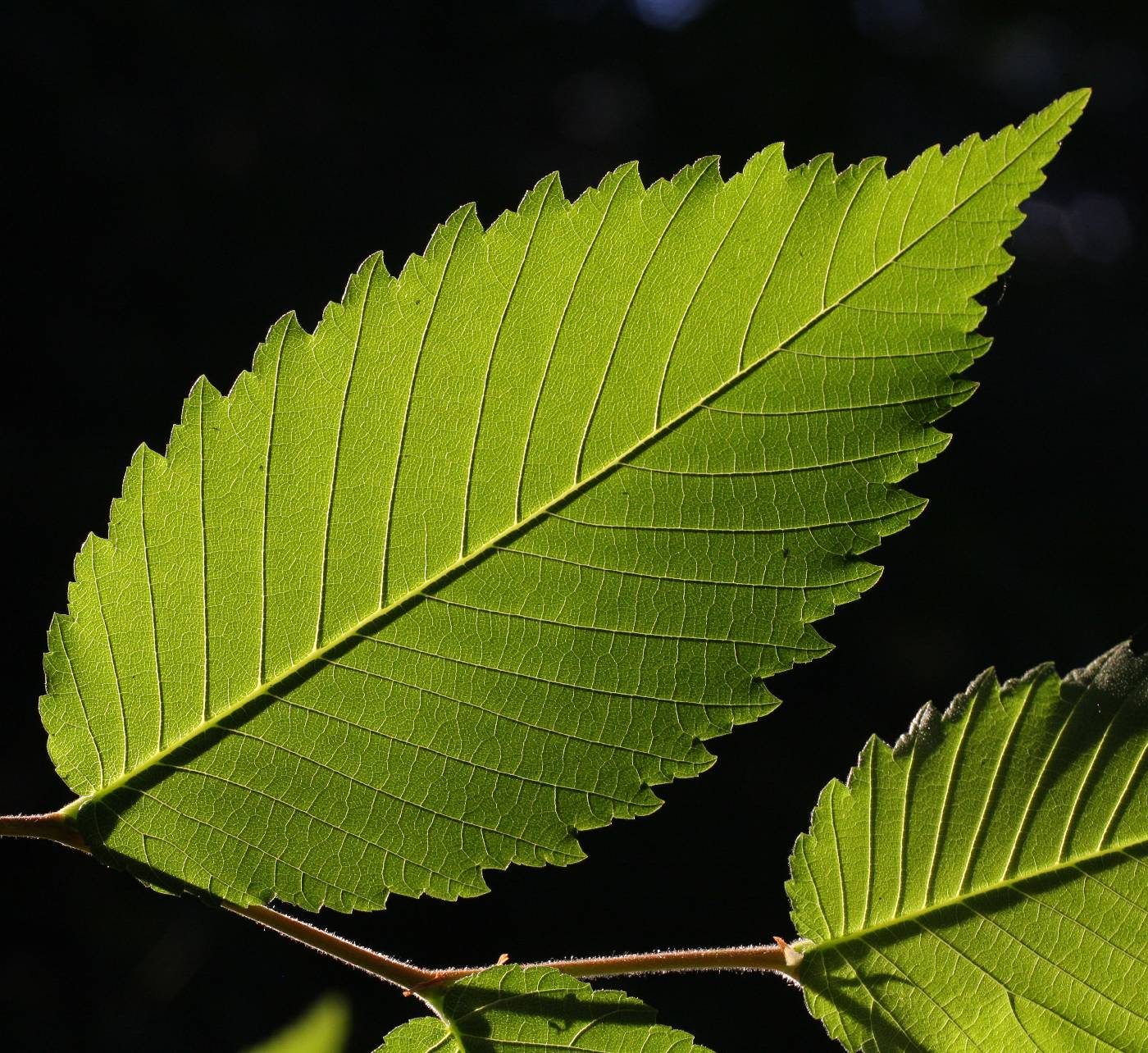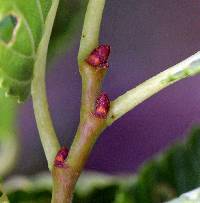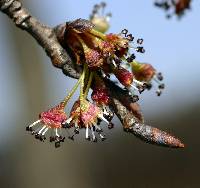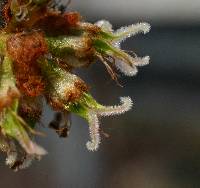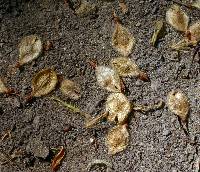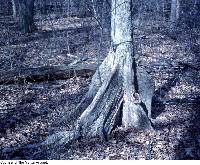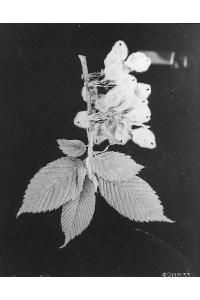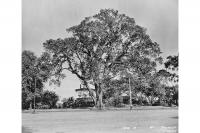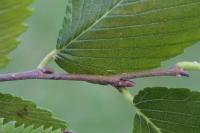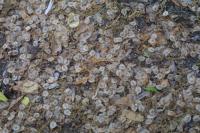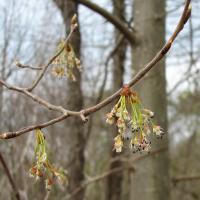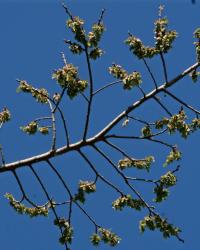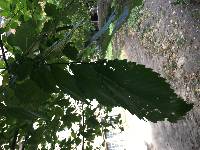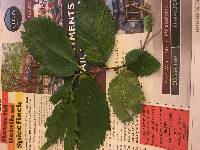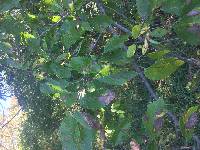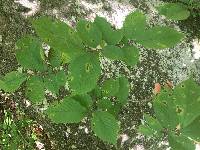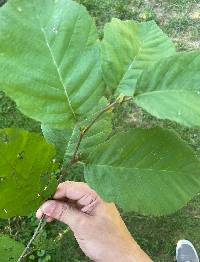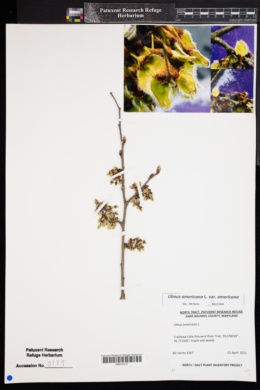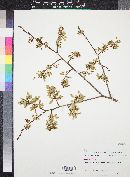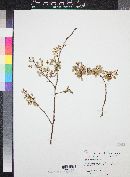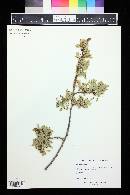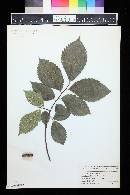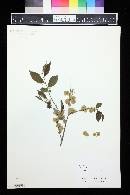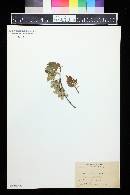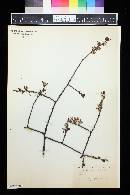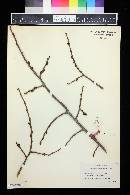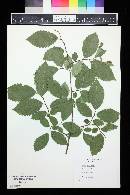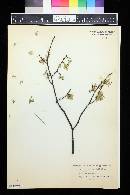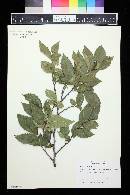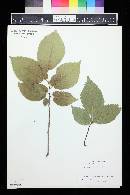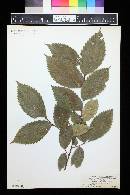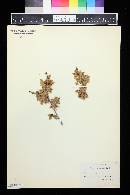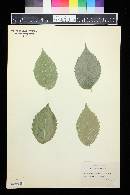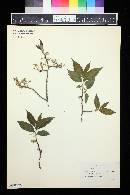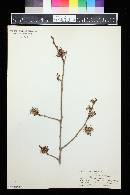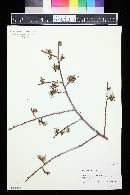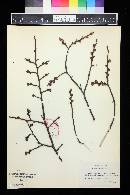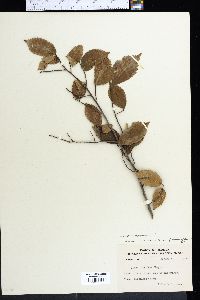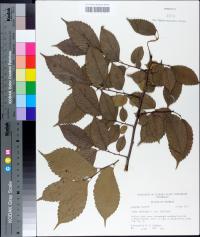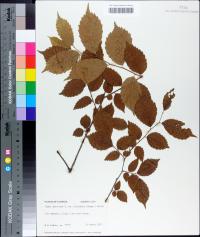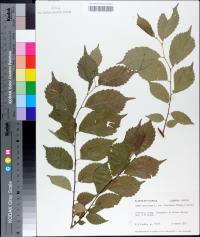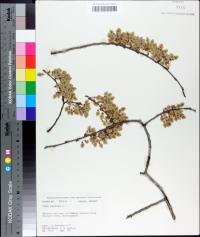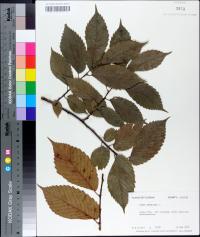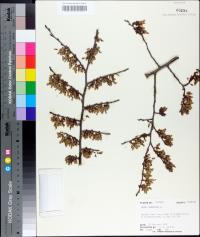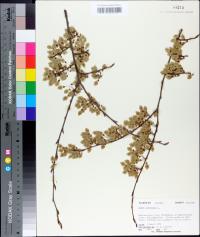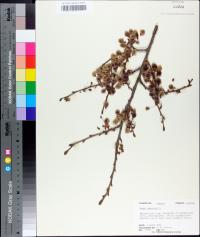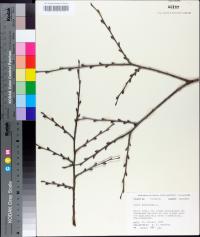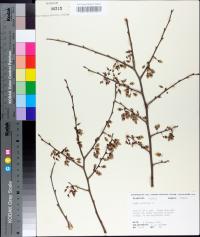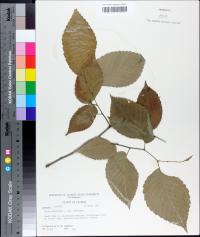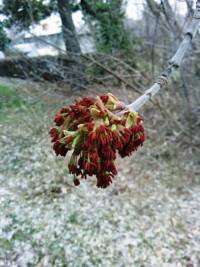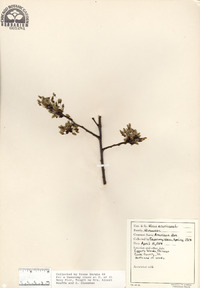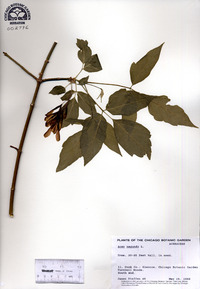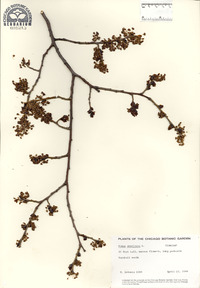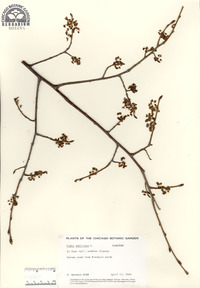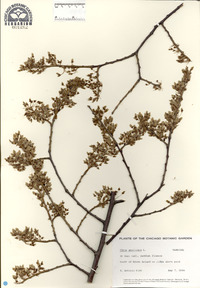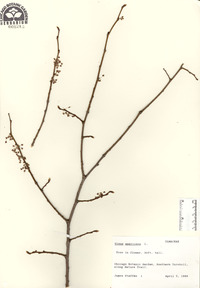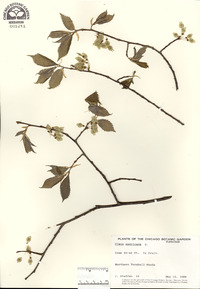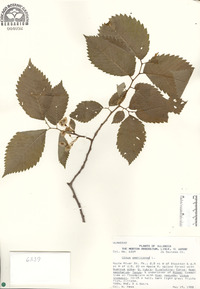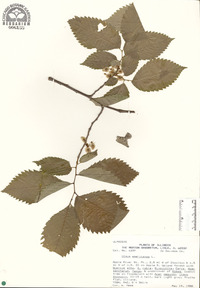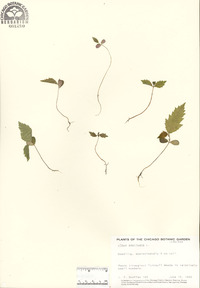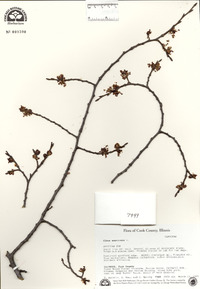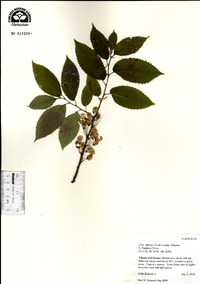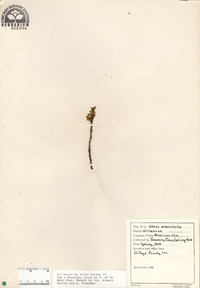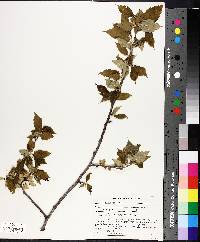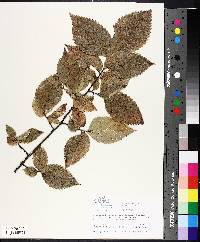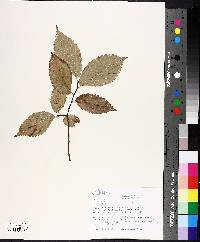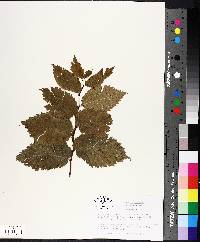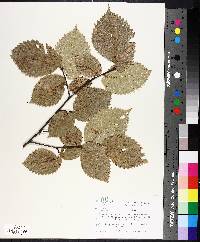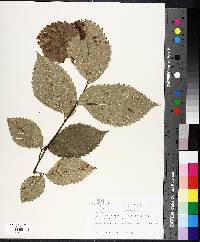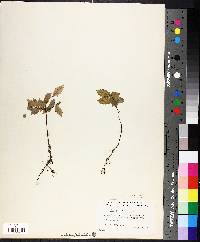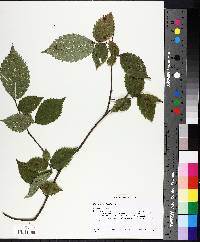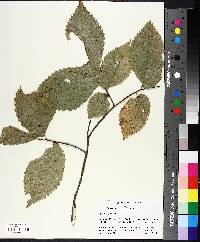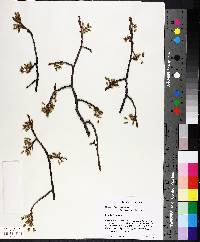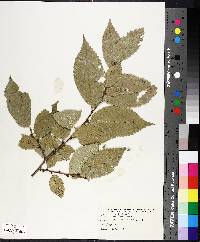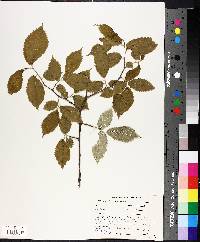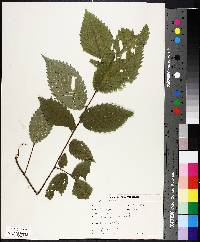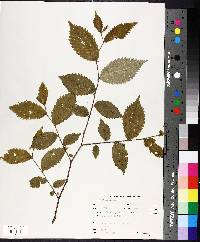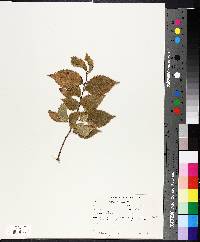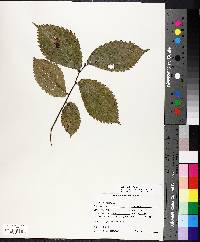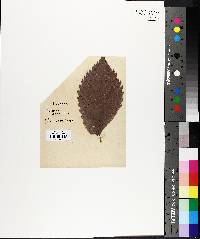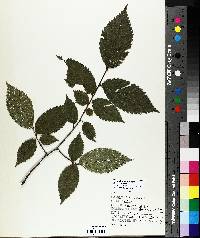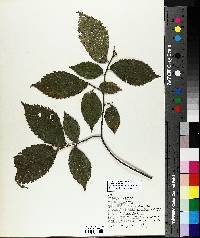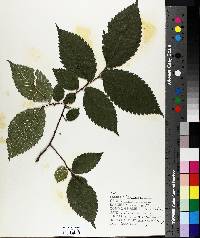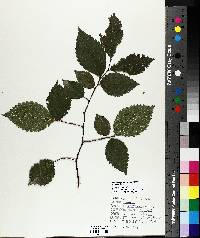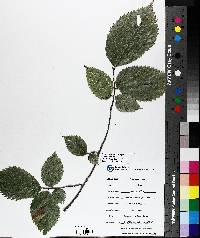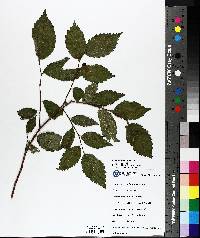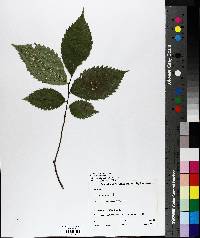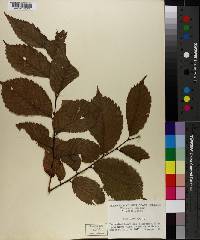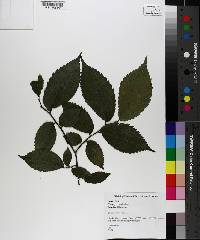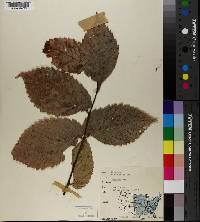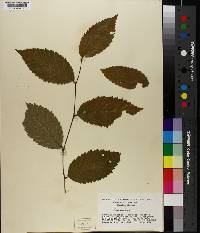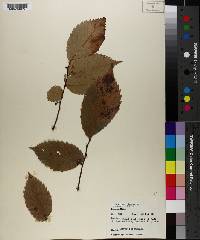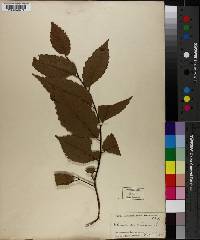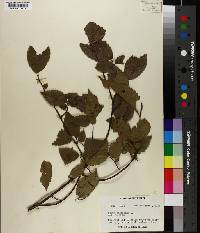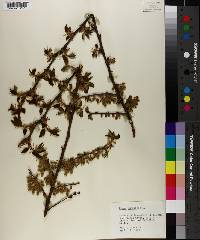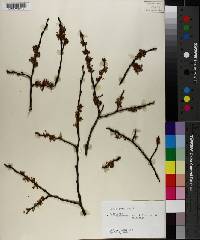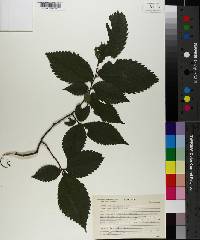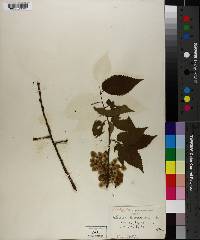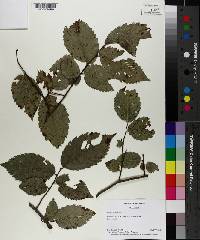
|
|
|
|
Family: Ulmaceae
American Elm, more...White Elm
[Ulmus americana f. alba (Aiton) Fernald, moreUlmus americana f. pendula (Aiton) Fernald, Ulmus americana f. viridis F. Seym., Ulmus americana var. americana , Ulmus americana var. aspera , Ulmus americana var. floridana (Chapm.) Little, Ulmus floridana Chapm.] |
Trees , 21-35 m; crowns spreading, commonly vase-shaped. Bark light brown to gray, deeply fissured or split into plates. Wood soft. Branches pendulous, old-growth branches smooth, not winged; twigs brown, pubescent to glabrous. Buds brown, apex acute, glabrous; scales reddish brown, pubescent. Leaves: petiole ca. 5 mm, glabrous to pubescent. Leaf blade oval to oblong-obovate, 7-14 × 3-7 cm, base oblique, margins doubly serrate, apex acute to acuminate; surfaces abaxially glabrous to slightly pubescent, tufts in axils of veins, adaxially glabrous to scabrous. Inflorescences fascicles, less than 2.5 cm, flowers and fruits drooping on elongate pedicels; pedicel 1-2 cm. Flowers: calyx shallowly lobed, slightly asymmetric, lobes 7-9, margins ciliate; stamens 7-9; anthers red; stigmas white-ciliate, deeply divided. Samaras yellow-cream when mature, sometimes tinged with reddish purple (s range of species), ovate, ca. 1 cm, narrowly winged, margins ciliate, cilia yellow to white, to 1 mm. Seeds thickened, not inflated. 2 n = 56. Flowering winter-early spring. Alluvial woods, swamp forests, deciduous woodlands, fencerows, pastures, old fields, waste areas; planted as street trees; 0-1400 m; Man., N.B., N.S., Ont., P.E.I., Que., Sask.; Ala., Ark., Conn., Del., D.C., Fla., Ga., Ill., Ind., Iowa, Kans., Ky., La., Maine, Md., Mass., Mich., Minn., Miss., Mo., Mont., Nebr., N.H., N.J., N.Y., N.C., N.Dak., Ohio, Okla., Pa., R.I., S.C., S.Dak., Tenn., Tex., Vt., Va., W.Va., Wis., Wyo. Ulmus americana is reported as widely escaped in Idaho, which is not part of the natural range of this taxon. It is occasionally cultivated outside its native distribution, and it has escaped sporadically from cultivation. It is also reported as naturalized in Arizona, but I have seen no specimens. Ulmus americana is the state tree for Massachusetts and for North Dakota. The American elm is susceptible to numerous diseases, including Dutch elm disease. Ulmus americana has been a street and shade tree of choice because of its fast growth and pleasant shape and size. The species still exists in substantial numbers both as shade trees and in nature. Numerous infraspecific taxa have been recognized in Ulmus americana (A. J. Rehder 1949; P. S. Green 1964). Native American tribes frequently used parts of Ulmus americana for a variety of medicinal purposes, including treatment of coughs and colds, sore eyes, dysentary, diarrhea, broken bones, gonorrhea, and pulmonary hemorrhage, as a gynecological aid, as a bath for appendicitis, and as a wash for gunwounds (D. E. Moerman 1986).
PLANT: Naturalized trees to 35 m tall; buds lance ovoid; bark of mature trunk gray, furrowed. LEAVES: blade ovate oblong to obovate, 7 15 cm long, 3 7.5 cm wide, the base asymmetrical, the apex acuminate, glabrous to scabrous above, pubescent to sub glabrous below, with tufts of hairs and/or domatia in vein axils; margins twice serrate; 1 12 of the lateral veins forking per side in ours. INFLORESCENCE: pendulous fascicles, appearing before the leaves, the pedicels 1 2 cm long. FLOWERS: calyx 7 9 lobed; stamens 7 9. SAMARAS: ovate to elliptic, flat, ca. 1 cm long, deeply notched apically, ciliate. 2n = 56. NOTES: Widely cultivated, apparently naturalized at only 2 AZ localities: Canyon de Chelly, Apache Co., 1747 m (5730 ft), and Tempe, Maricopa Co., ca. 350 m (1100 ft); winter to early spring; native to e U.S. and se Can., e of the Rocky Mts., cultivated there and elsewhere, reportedly escaped in other places such as ID. Valued shade tree. Susceptible to Dutch elm disease. REFERENCES: Brasher, Jeffrey W. 2003. Ulmaceae. J. Ariz. - Nev. Acad. Sci. Volume 35(2). Large tree to 20 - 30 m tall, trunk diameter 0.5 - 1.2 m Leaves: alternate, with short, stout, yellowish leafstalks. The blade is dark green and sometimes rough above, pale and usually softly hairy beneath, 10 - 15 cm long, half as wide, and oval to elliptic with an asymmetrical base and pointed tip. It is also coarsely double-toothed, thick, and firm. The veins are rarely forked. In autumn the leaves turn yellow. Note: leaf morphology is highly variable for this species. Flowers: in loose, drooping clusters, brownish red, small, bell-shaped. Fruit: single-seeded, winged (samara), in clusters, long-stalked, 1.2 cm long, and oval with a hairy margin and deeply notched tip. Bark: ashy gray, thick, and furrowed into broad, interlacing, scaly ridges. It shows alternating light and dark colored bands in cross-section. Twigs: slender, firm, sometimes sparsely hairy, light green, becoming ashy gray. Leaf scars half-round and covered with a corky layer. Bundle scars three. Buds: reddish brown, 3 - 6 mm long, broadly egg-shaped, blunt to pointed, flattened, sometimes slightly hairy. Form: broad, rounded, flat-topped, or vase-shaped. Trunk commonly divided into a few large trunks and forked into many spreading branches with drooping ends. Similar species: Ulmus procera differs by having shorter leaves (5 - 8 cm) and hairless samaras. The leaves of U. pumila, which are also shorter (3 - 7 cm), are not distinctly asymmetrical at the base or doubly-toothed. Ulmus rubra differs by having very rough leaves, forked veins near the leaf margins, rusty-colored bud hairs, and brown, hairy seed cavities. Ulmus thomasii bears corky twig wings, leaves with a nearly symmetrical base, and hairy samaras. The hybrid U. x notha differs by having middle bud scales fringed with white hairs and terminal bud scales fringed with reddish brown hairs. Leaves of the genus Celtis, which are similar in appearance, exhibit three main veins arising from the base of each blade. Flowering: March to mid-May, before the leaves Habitat and ecology: Common in rich woods, wooded floodplains, and along streams, but can be found in a wide variety of soil types. Occurence in the Chicago region: native Notes: Ulmus americana is frequently planted as an ornamental and shade tree. Because of its attractive vase-shaped branching, this species was planted extensively along town and city streets by early Europeans, forming beautiful cathedral-like avenues. Since the mid-1950's, both the street plantings and the wild populations in the Chicago Region have been severely decimated by Dutch elm disease and phloem necrosis. Today, disease-resistant clones and hybrids are available for planting. The wood of Ulmus americana is used for furniture, flooring, boxes, crates, barrels, veneer, and shipbuilding. See link to Dutch elm disease below. Etymology: Ulmus is the Latin word for elm. Americana means "of or from America" (North or South). Author: The Morton Arboretum Graceful, arching tree to 40 m, the twigs smooth or short-hairy; lf-buds glabrous or minutely puberulent; lvs ovate-oblong to somewhat obovate, mostly 8-14 cm, glabrous to scabrellous above; fls fascicled, on unequal pedicels to 2 cm; cal usually oblique, lobed; stamens 5-9; stigmas white; fr elliptic, 1 cm, densely ciliate, the sides glabrous and strongly reticulate; 2n=56. Usually in moist, fertile soil; N.S. and Que. to Sask., s. to Fla. and Tex. Gleason, Henry A. & Cronquist, Arthur J. 1991. Manual of vascular plants of northeastern United States and adjacent Canada. lxxv + 910 pp. ©The New York Botanical Garden. All rights reserved. Used by permission. From Flora of Indiana (1940) by Charles C. Deam Found in every county of the state. It prefers a moist or wet soil and is frequent to common in such habitats throughout the state except in the dunes. …… Indiana Coefficient of Conservatism: C = 3 Wetland Indicator Status: FACW Deam (1932): This species is generally called white elm, or water elm. Found in every county. In Perry County it is often called hub elm. It is generally known as "elm" and when this term is used, it refers to this species. The wood has a very wide range of uses. The greatest amount has been used for hoops, staves, and heading. Large quantities have been used in the manufacature of agricultural implements, hubs, furniture, basket handles, etc. White elm is usually considered very difficult to split, but I was informed by a pioneer timber cutter that the heart wood of the veterans of the forest splits as well as oak, and that he worked many a tree up into staves. He told me that he made into staves a tree in Paulding County, Ohio, that was eight feet in diameter at the stump. There is little attempt being made by woodlot owners to propagate this tree. However, the natural propagation of the species is probably greater than that of any other species because it produces seed at an early age, and culls of the forest are not cut because they are not good for fuel which leaves them to produce seed. Then the seeds are light and are scattered to great distances by the wind and water. It is propagated very easily from seedlings. The tree when grown in the open has a tendency to be bushy and unless it is given some pruning will have a very short clear trunk. It has always been regarded as one of the best species for shade tree planting. For beauty of form it is not excelled by any tree for shade or ornamental planting. However, it has several insect enemies that oftn require spraying to keep them under control. |
|
|
|

